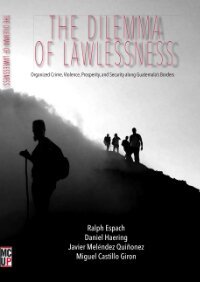By Ralph Espach, Daniel Haering, Javier Melendez Quinonez, and Miguel Castillo Giron.
The Dilemma of Lawlessness explores in-depth three towns typical of Guatemala’s border regions and examines the economic, political, and security effects of the amplification of the drug trade in their streets, across their rivers, and on their footpaths. The cases reveal that trade has brought prosperity, but also danger, as illegal profits penetrate local businesses, government offices, and churches as longstanding local smuggling networks must contend with or accommodate the interests of Mexican cartels. The authors argue persuasively for the importance of cultivating local community capital to strengthen these communities’ resiliency in the face of these threats.
Quantico, VA: Marine Corps University Press (MCUP), 2016. 104p.



